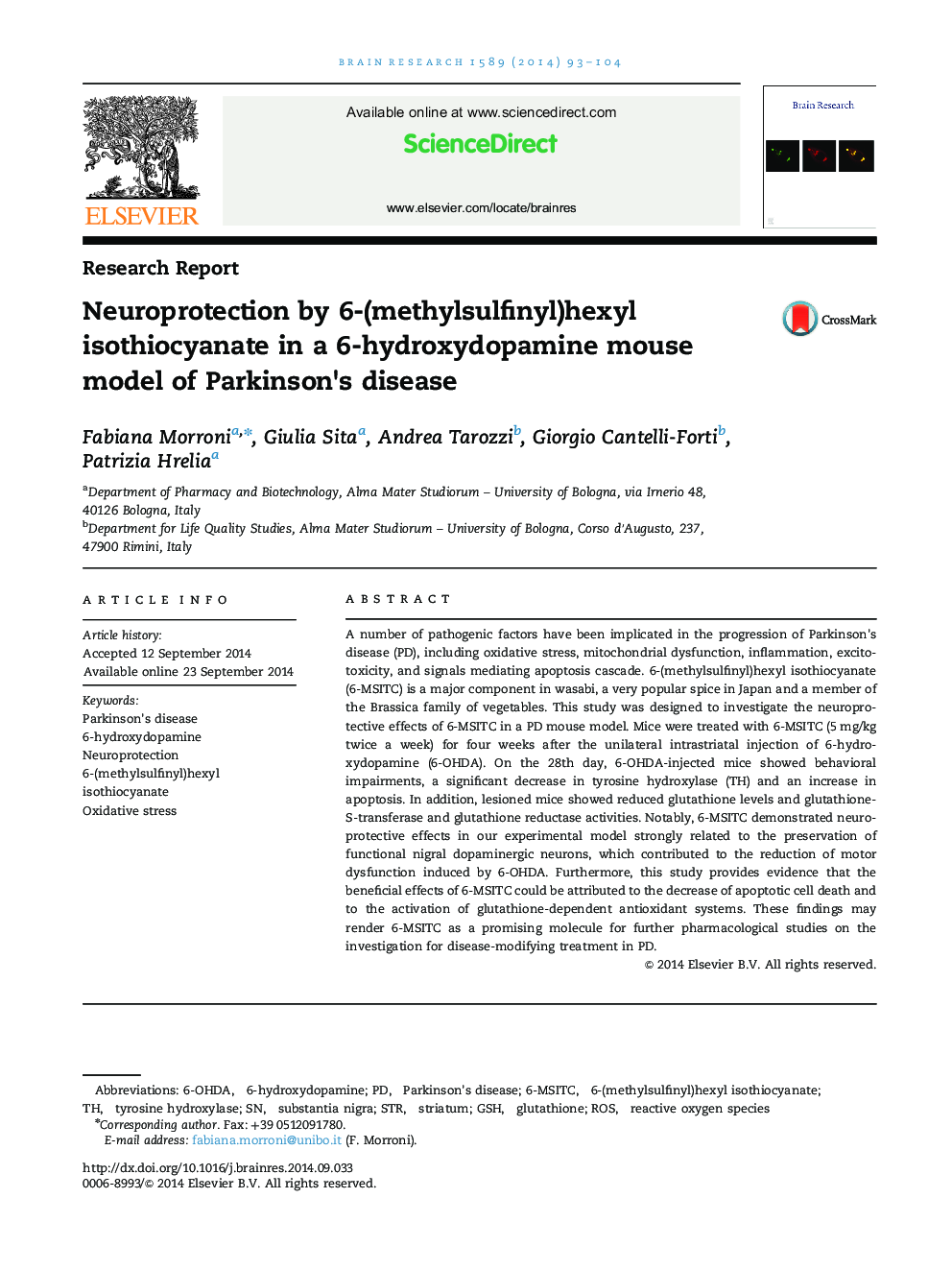| Article ID | Journal | Published Year | Pages | File Type |
|---|---|---|---|---|
| 4324059 | Brain Research | 2014 | 12 Pages |
•6-(methylsulfinyl)hexyl isothiocyanate (6-MSITC) protects dopaminergic neurons.•6-MSITC improves motor impairments in 6-OHDA-lesioned mice.•6-MSITC reduces DNA fragmentation and caspase-3 activation induced by 6-OHDA.•6-MSITC restores redox status altered by 6-OHDA.•6-MSITC induces the activation of GSH-dependent antioxidant systems.
A number of pathogenic factors have been implicated in the progression of Parkinson׳s disease (PD), including oxidative stress, mitochondrial dysfunction, inflammation, excitotoxicity, and signals mediating apoptosis cascade. 6-(methylsulfinyl)hexyl isothiocyanate (6-MSITC) is a major component in wasabi, a very popular spice in Japan and a member of the Brassica family of vegetables. This study was designed to investigate the neuroprotective effects of 6-MSITC in a PD mouse model. Mice were treated with 6-MSITC (5 mg/kg twice a week) for four weeks after the unilateral intrastriatal injection of 6-hydroxydopamine (6-OHDA). On the 28th day, 6-OHDA-injected mice showed behavioral impairments, a significant decrease in tyrosine hydroxylase (TH) and an increase in apoptosis. In addition, lesioned mice showed reduced glutathione levels and glutathione-S-transferase and glutathione reductase activities. Notably, 6-MSITC demonstrated neuroprotective effects in our experimental model strongly related to the preservation of functional nigral dopaminergic neurons, which contributed to the reduction of motor dysfunction induced by 6-OHDA. Furthermore, this study provides evidence that the beneficial effects of 6-MSITC could be attributed to the decrease of apoptotic cell death and to the activation of glutathione-dependent antioxidant systems. These findings may render 6-MSITC as a promising molecule for further pharmacological studies on the investigation for disease-modifying treatment in PD.
